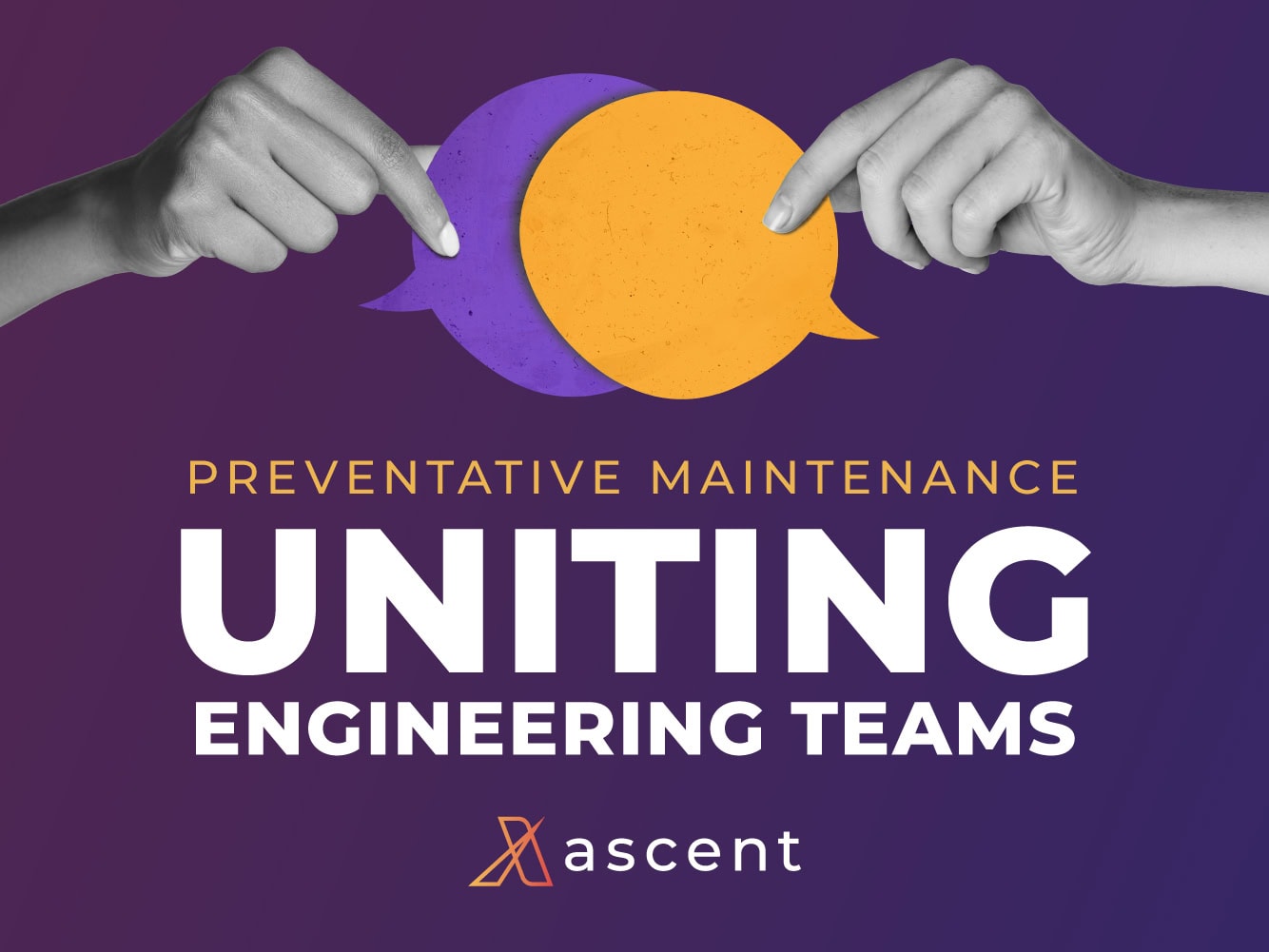Welcome to our second blog of preventative maintenance (PM) three-part blog series, where we will dive into how to unite engineering teams for optimal performance.
Preventative maintenance is often based chiefly on manufacturer recommendations. Thus, PM programs within a facility often represent an amalgam of various manufacturer recommendations. Here, the limitations lie in the fact that manufacturers’ engineers cannot be on every site where the company’s equipment is installed. Normally, OEM engineering teams are focused on designing new equipment versus operating and maintaining equipment already in the field. Therefore, input from local engineers, in conjunction with manufacturer recommendations, benefits the overall maintenance program. The local technical staff help ensure that the equipment is operating correctly; and when it is not, the local engineers are often the best resource for proposing solutions.
On-Site Engineers: An Untapped Resource
Maintenance engineers and managers work with the equipment they oversee on a regular basis, so they know those assets better than anyone in the organization. Engaging these personnel to aid in creating the PM plan can help companies customize those plans to their unique maintenance needs.
Doing so has several benefits, including the ability to gain high-level insight going into regular tasks, less equipment being needed for PM tasks, low-redundancy plans that more efficiently allocate resources, greater customizability, and a more cost-effective PM program.
In a recent example, a client was experiencing a greatly reduced service life of only two years for evaporative media pads, instead of the manufacturer’s anticipated ten-year service life. Even though all manufacturer recommendations were in place; the media simply was not performing as designed.
An on-site engineer identified the problem: The media was overloaded, thus causing premature failure. An alternate structure to better support the media was proposed, and the OEM accepted the recommendation. Without this valuable on-site expertise, the facility owner would have needlessly replaced the media every two years at significant cost.
Superior Engagement and Superior Insights
Operational Equipment Data brings field engineers and technicians together with OEM and specifying engineers. Each group of engineers engages with a facility in their own unique way, with OEM engineers designing equipment, specifying engineers applying it, and field engineers operating and supporting it.
Within this engineering ecosystem, the common ground is the performance of the equipment and the resulting data, and each of these groups influences performance in diverse ways. Consequently, how actual performance is understood influences future design work.
When united through data, these distinct groups can create better operations and maintenance specifications at every stage.
Mitigating Future Risk
A pair of air-cooled condensers designed in a 2N configuration were set to operate in a lead/lag to cool a UPS room. During an early winter storm that included freezing rain, the lead condenser sent an evaporative fan alarm to the system and began to shut down. The lag unit came online and took over, bringing the room back to its set point, but after some time had passed, the lag unit sent a high-head-pressure alarm and it, too, shut down.
Upon inspection, the site engineer discovered that both units were locked up with ice caused by the freezing rain due to the lag unit not operating during the storm, even though the OEM engineer had designed the unit to operate properly in extreme temperatures.
To return to normal operation, the field engineer and on-call engineering team utilized on-site spare parts to replace the failed components and restore redundancy. Post incident, the team and field engineer proposed a solution to engage the fans at regular intervals while the units were in their lag cycle to mitigate future risk. The proposal was reviewed by the OEM’s engineering team and approved.
This situation led to numerous changes within the maintenance program—not only at this facility, but at others within the portfolio that were susceptible to ice and winter conditions.
Bringing engineering and operational teams together with good Operational Equipment Data allows for the sharing of data between discrete engineering teams and facilitates the integration of operational enhancements into broader maintenance programs everywhere they are needed.
For more information about preventative maintenance scheduling, download our new white paper or sign up for our newsletter to stay in the know.
